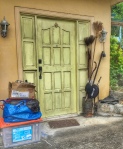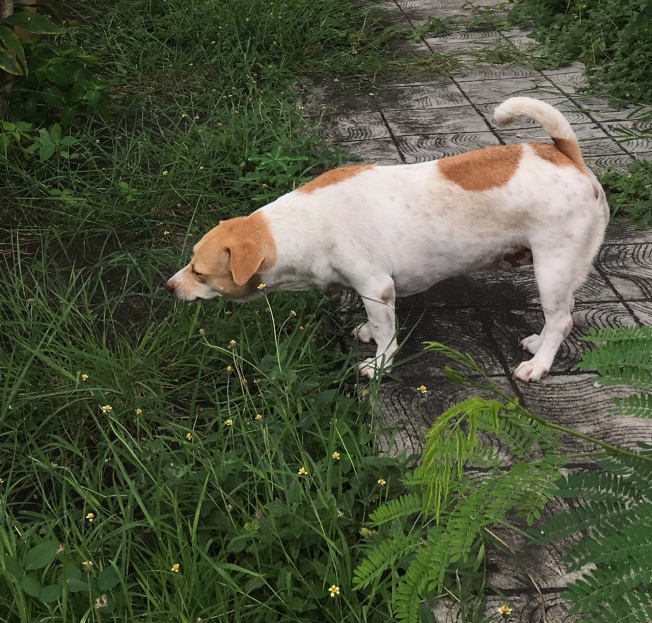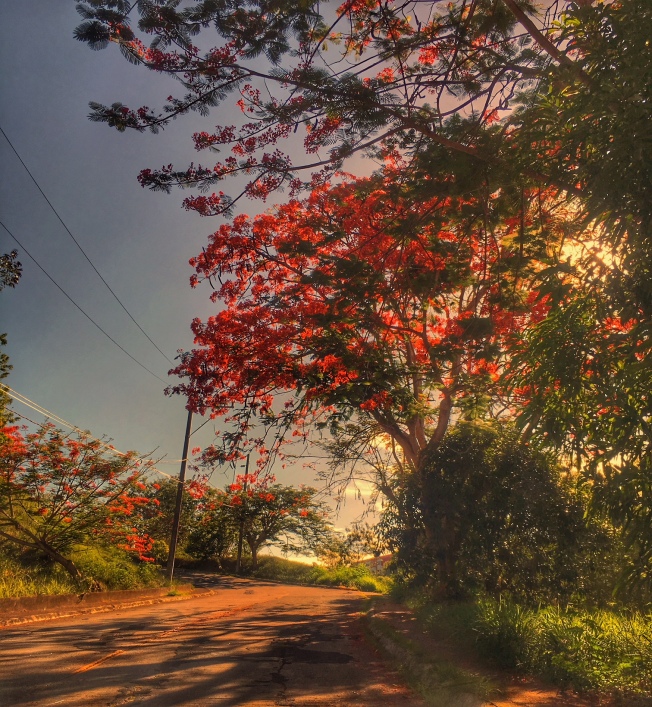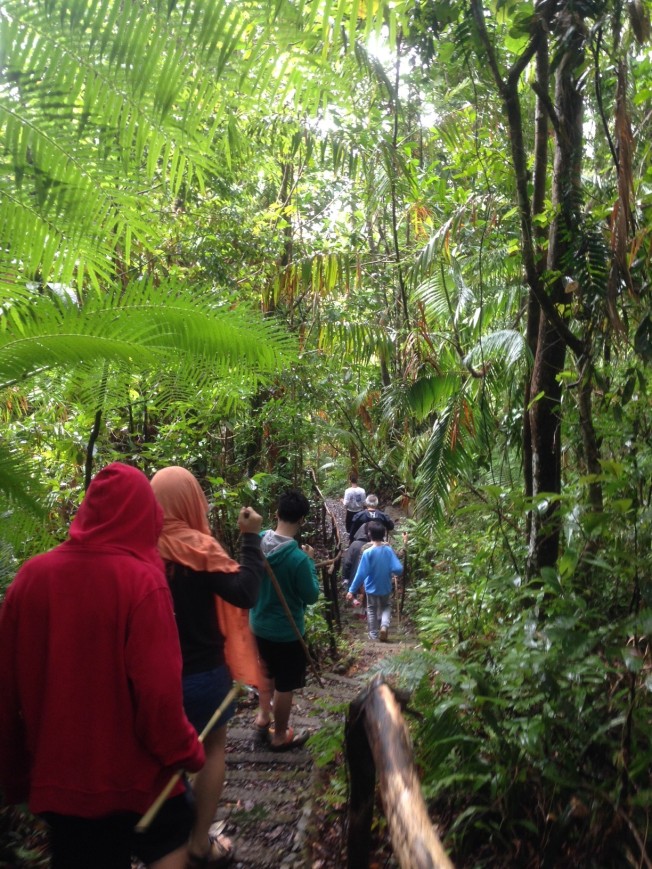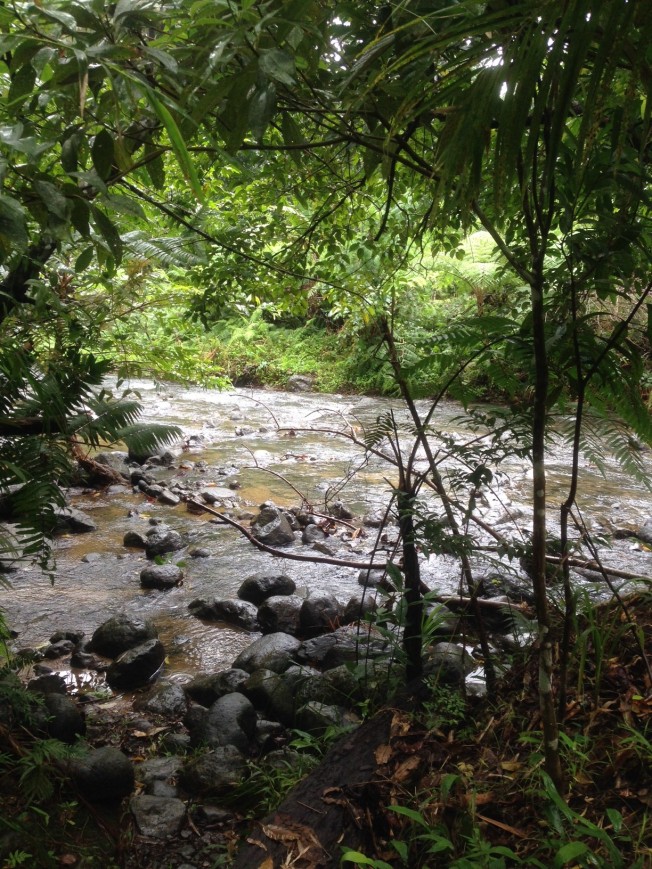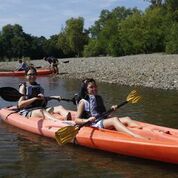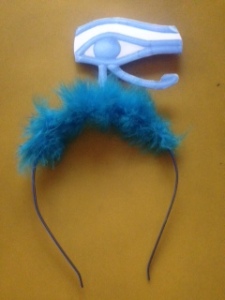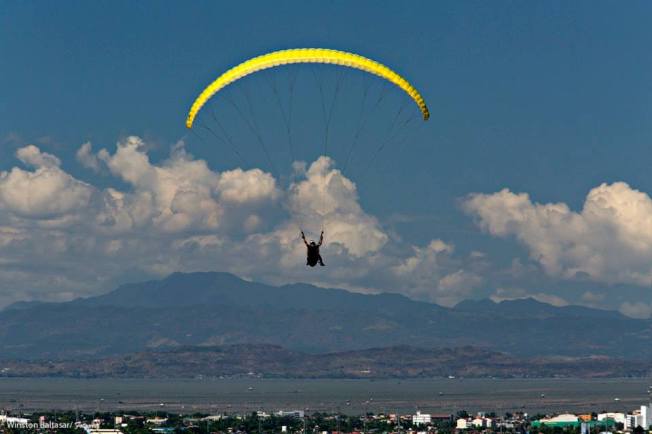
It took a pandemic for people to water their green thumbs and plant vegetables everywhere. Weeks into the government-mandated lockdown, neighbors started weeding empty lots around our village and turned them into vegetable gardens. In the city, friends took to their condo rooftops and balconies to plant herbs, tomatoes, and leafy greens in whatever container they could use.
My thumb is more black than green, though. So, initially, I stuck with the inedible kalanchoe succulents my sister brought over when we moved in. It’s the perfect plant for a plant killer like me. This succulent thrives on being neglected. And so today, I have several flourishing kalanchoe communities that are roaring to life all around the house. My only contribution to their rockstar existence is to ignore them.
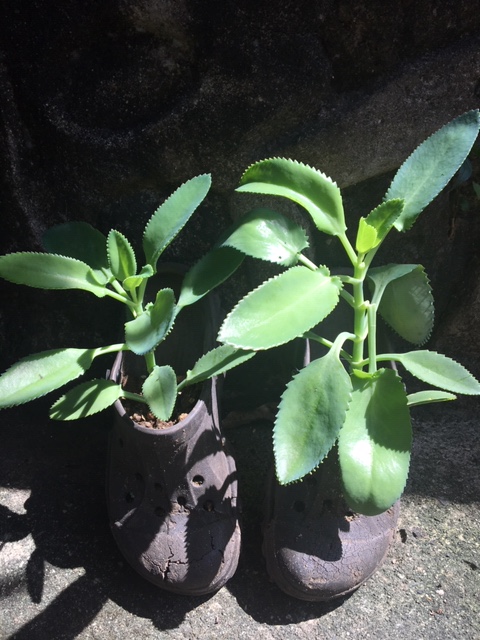
Kalanchoe, refusing to die in old Crocs
I thought that was how I could ignite my gardening prowess. But then, because of the pandemic, it became difficult to go out and buy our weekly stash of fruits and vegetables. I especially missed calamansi, that most noble kin of Asian limes. I did have a young calamansi plant; but it never bore fruit. At the beginning of the lockdown, it was on the ground under the sun and rain, forgotten for most of its young life. Interestingly, it still survived.
So when I got in on the gardening movement, I replanted our sad calamansi to a place more conducive to love. I remembered to water it every day. Also, I spoke to it gently, encouraging it to survive like an inspiring teacher would with a student flunking chemistry. My son even managed to scrounge up half a creative brain cell to name our baby calamansi tree: Plant. Within two weeks, it (genderless, because my Gen Z daughter says gender is not real) had felt enough love from all our earth-shaking efforts and produced its first fruits!
Our delight, unfortunately, was shared by every other living creature around us. Fat green caterpillars regularly came over and ate Plant’s leaves. Worms (or whatever they are) crawled over and made the uneaten leaves shrivel up. Most heartbreakingly, birds–those evil parasites–swooped down and pecked off the calamansi fruits that were just the size of pinheads. From 14, the number of fruits went down to just eight.
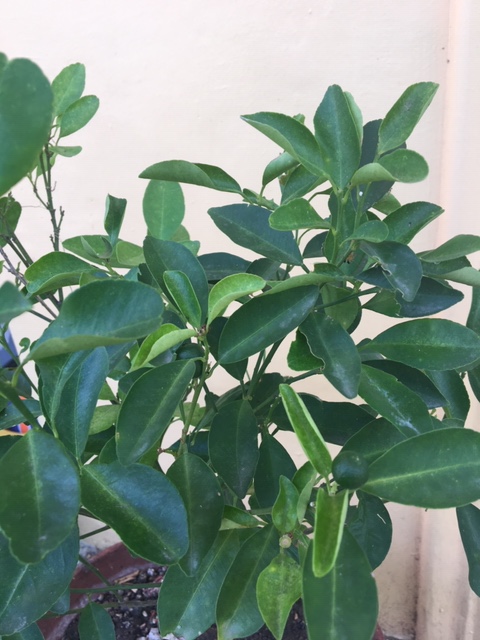
Calamansi fruit #1
Panicking, I put Plant in a pot and moved it to our kitchen. Although it received a few hours of sunlight daily through a window, Plant’s leaves understandably became paler. I could tell it wasn’t happy. So after about a week, my husband moved it, yet again, outside to just beside our front door. There, Plant remains to this day. Two fruits have survived the evilness of the birds, and Plant’s leaves are becoming dark green again. I almost cry tears of joy.
Besides Plant, random vegetables have sprouted around our house. We bury our biodegradable waste–which is mostly fruit and vegetable skin and seeds–wherever there’s soil, which is all around. The hardy veggies took the chance and dared to grow.
So we now have squash spilling over the ledge I buried its seeds in. There’s also what appears to be a chili pepper plant growing a few feet away. I don’t remember ever burying any chili pepper seeds, yet they still sprouted. And for about two weeks, I gave some tender loving care to a seedling that I thought was a tomato plant. Turned out it was a weed. It must be the happiest weed in the world.

The “chili pepper” plant. Please don’t let me down
So this is where we are now. In about two weeks, we will be able to enjoy our two pieces of organic calamansi–should be enough for a cup of warm calamansi juice. And in about a month, according to the Internet, we’ll be harvesting some squash. The “chili pepper” plant is just sprouting tiny flowers now so I’m thinking it could be another tomato-weed fallacy.
I’ll see you when everything’s ready and ripe, then. There’ll be half a cup of calamansi juice and a pot of squash soup waiting for you. Depending on how the “chili pepper” plant turns out, there’ll also be either a bowl of chili peppers or a vase of flowers. Calamansi, squash soup, and chili pepper is not a good combination in the gut, by the way. But that’s what grew here so that’s what you’ll get.
